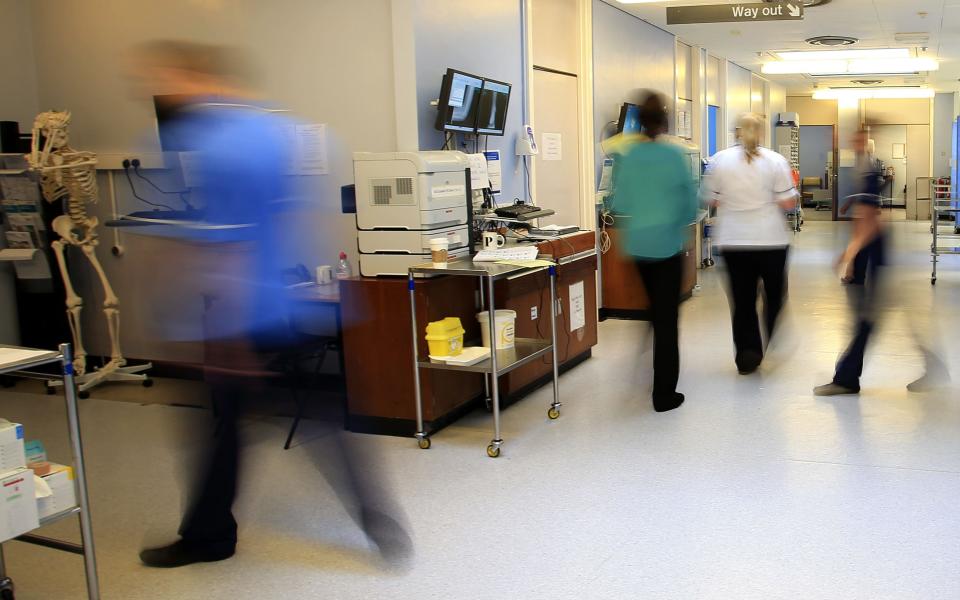Dead bodies returned to wrong families in litany of NHS mortuary errors - major new report

Dead bodies are being lost, disfigured or released to the wrong family for burial as part of a “devastating” litany of failures by NHS mortuary staff, a new report reveals.
The first national investigation of its kind found at least five corpses had gone missing over 11 years and 25 sets of loved-ones given the wrong body to bury or cremate due to avoidable mistakes.
The study also revealed basic failures of storage which meant family members were denied the chance to view deceased relatives because they had decomposed.
In at least two cases, families only realised they had been given the wrong body when they came to view it in the funeral director’s.
The experts behind the research last night called on hospitals to afford dead bodies the same dignity as live patients, and said mortuary failures should be treated as seriously as wrong-site surgery.
The investigation examined data from hospitals between 2002 and 2013, finding a total of 132 serious incidents relating to the treatment of corpses, a quarter of which involved fetuses.
Overall, 24 bodies were disfigured due to inept storage, such as being kept insufficiently cool, which in some cases meant the opportunity to perform a post mortem were lost.
In other cases, relatives became distressed after seeing their deceased loved-ones in a decomposed state.
It was common practice for one member of staff to check the paperwork and one to check the patient
Mr Iain Yardley, JRSM
The data also revealed bodies had been disfigured simply because staff dropped or struck them, as well as one “isolated” case of theft from a body by mortuary staff.
Published in the Journal of the Royal Society of Medicine, the study is the latest in a series of NHS scandals relating to the disposal of human remains, such as the admission by 10 trusts in 2014 that thousands of aborted and miscarried babies had been incinerated as part of clinical waste.
Mr Iain Yardley, who led the research at Evelina London Children’s Hospital, said: “This remains a deeply sensitive and contentious area that is a rigorous test of the quality of patient-centred care.
“A hospital board and its senior executives cannot promote their values in this regard if they fail parents by presiding over incidents in the management of the bodies of their precious children.”
Mr Yardley’s research found that in up to 10 cases relatives were given only part of their family member’s body parts, disposing of them without knowing that more remained in the mortuary.
The review uncovered particular problems in communication between maternity units and mortuaries, detailing instances where couples had been given their baby’s placenta to cremate, but not the fetus itself.
Mr Yardley said basic mistakes were leading to the misidentification of dead bodies.
“It was common practice for one member of staff to check the paperwork and one to check the patient, and at no time did either check the other as per instructions in the protocol,” he said.
He pointed to particular problems in the storage of large corpses, which sometimes did not fit in mortuary refrigerators, and especially small bodies such as fetuses, which he said were sometimes stored in “communal areas”.
Mr Yardley added: “Serious incidents involving a dead body are uncommon.
“However, the findings of our study serve as a warning to those responsible for the management of mortuary services of the significant risks inherent in such services and the potentially devastating incidents that can occur if these risks are not mitigated and errors are allowed to go unchecked.”
The Alder Hey organs scandal, involving the unauthorised removal, retention and disposal of human tissue for 17 years up to 1995, led to an overhaul of legislation in the form of the Human Tissue Act 2004.
An NHS Improvement spokesperson, said: “We expect all NHS trusts to take appropriate measures to ensure that deceased patients are treated with the utmost respect and appropriately cared for while in hospital mortuaries. Where things do go wrong, ensuring that high quality investigations are completed helps prevent mistakes from being repeated.”

 Yahoo News
Yahoo News 